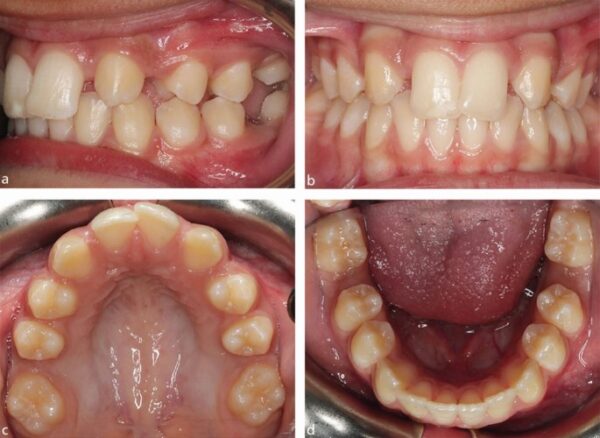Molars, commonly referred to as molar teeth, are essential for chewing and grinding food. Understanding their development, common issues, preventive measures, treatment options, and future care advancements is crucial for maintaining optimal dental health.
Understanding Molars
Stages of Molar Development
Primary Molars
Primary molars, also known as baby molars, start to erupt around six months of age and are eventually replaced by permanent molars.
Permanent Molars
Permanent molars emerge around ages six and twelve, intended to last a lifetime, aiding in proper chewing and digestion.
Common Issues with Molars
Decay and Cavities
They are prone to decay and cavities due to their location and deep grooves, making thorough oral hygiene essential.
Impaction
Impaction occurs when a molar fails to emerge correctly, often causing discomfort and potential misalignment of adjacent teeth.
Malocclusion
Malocclusion, or improper alignment of the molars, can lead to difficulty chewing, jaw pain, and increased risk of dental issues.
Preventive Measures for Molar Health
Proper Oral Hygiene Practices
Regular brushing, flossing, and using fluoride-based products help prevent decay and maintain molar health.
Regular Dental Check-ups
Routine visits to the dentist allow early detection of molar issues and prompt intervention to prevent further complications.
Dietary Considerations
Limiting sugary foods and beverages and incorporating calcium-rich foods promote strong molars and overall dental health.
Treatment Options for Molar Problems
Fillings and Restorations
For decayed or damaged molars, fillings and restorations help restore function and prevent further deterioration.
Orthodontic Treatments
Orthodontic interventions like braces or aligners correct malocclusion and improve molar alignment for optimal chewing and speech.
The Importance of Molars in Dental Health
Maintaining molar integrity is crucial for overall dental health. Issues with molars, such as decay, trauma, or malocclusion, can lead to toothache, sensitivity, and severe conditions like abscesses and gum disease. Missing or extracted molars can disrupt oral balance, leading to occlusal discrepancies, temporomandibular joint problems, and compromised aesthetics. Thus, protecting molar health is essential for sustaining optimal oral well-being.
Common Disorders Affecting Molars
Despite their strength, they are susceptible to various issues. Dental caries, or cavities, result from enamel demineralization and bacterial invasion. Untreated caries can progress to deeper tooth layers, causing pain and infection. Periodontal diseases, such as gingivitis and periodontitis, threaten molars by damaging supporting structures like periodontal ligaments and alveolar bone. Malocclusion, characterized by misaligned teeth, can strain it, leading to premature wear, fractures, and temporomandibular joint disorders. Timely dental intervention is vital to address these issues and maintain molar longevity.
Tips for Preserving Molar Health
Brushing and Flossing
Adopt a meticulous oral hygiene routine by brushing twice daily with fluoride toothpaste and flossing regularly to remove plaque and debris from between molars.
Healthy Dietary Habits
Consume a balanced diet rich in fruits, vegetables, and lean proteins while limiting sugary and acidic foods that can erode enamel and predispose molars to decay.
Regular Dental Check-ups
Schedule biannual dental check-ups and cleanings to allow your dentist to assess molar health, detect early signs of dental disease, and administer prompt interventions as needed.
Protective Measures
Consider protective measures like dental sealants and mouthguards to shield molars from trauma and reduce damage risk during sports activities or teeth grinding episodes.
Orthodontic Evaluation
Consult with an orthodontist if you experience malocclusion or dental misalignment issues to explore treatments like braces or clear aligners that can rectify occlusal discrepancies and alleviate molar strain.
By incorporating these preventive measures into your daily routine and prioritizing molar care, you can strengthen the foundation of your oral health and maintain a radiant smile for years to come.
Surgical Interventions
In severe cases of impaction or malformation, surgical procedures may be necessary to address molar issues effectively.
The Future of Molar Care
Advancements in Dental Technology
Innovations such as 3D imaging, laser dentistry, and digital impressions enhance diagnosis and treatment outcomes for molar-related issues.
Emerging Trends in Preventive Dentistry
Focus on personalized preventive care, including genetic testing and tailored treatment plans, aims to optimize molar health and overall dental wellness.
Conclusion
Understanding molar formation, common issues, preventive measures, treatment options, and future advancements in molar care is vital for maintaining optimal dental health and overall well-being.
FAQs
What causes molar decay? Molar decay is primarily caused by plaque and bacteria accumulation on the tooth surface, often exacerbated by poor oral hygiene and diets rich in sugars and acids.
At what age do children typically get their first molars? Children usually get their first set of molars, known as primary molars, around six months to three years old.
Is it common for molars to be extracted? While extraction is sometimes necessary due to severe decay, impaction, or overcrowding, it’s generally avoided to preserve dental function and aesthetics.
Can molar malocclusion be corrected without braces? In some cases, mild malocclusion can be corrected through orthodontic treatments like clear aligners or dental appliances, depending on the severity and underlying cause.
How often should one visit the dentist for molar check-ups? Dentists typically recommend biannual check-ups for routine exams and cleanings, though frequency may vary based on individual oral health needs and risk factors.
